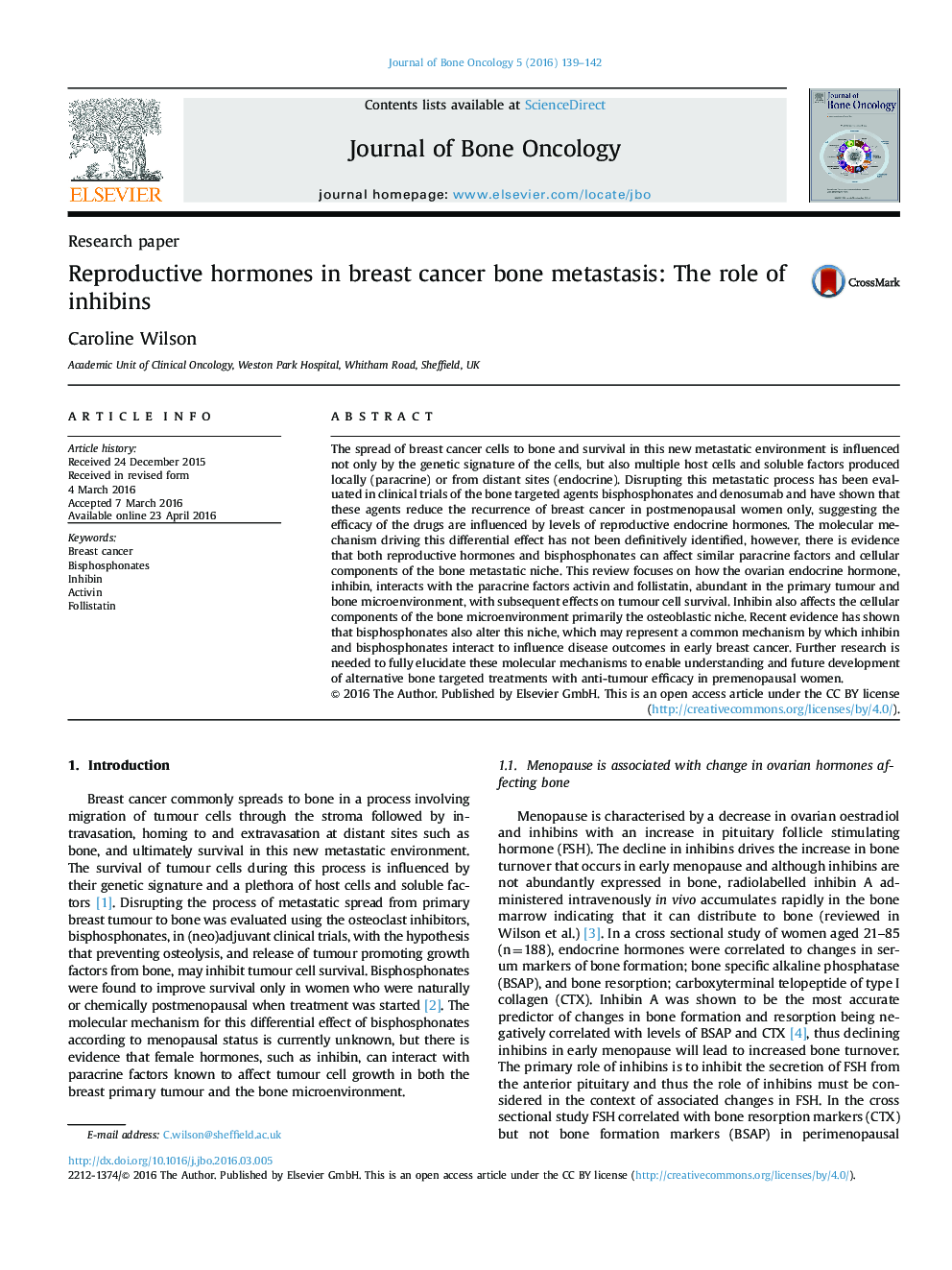| Article ID | Journal | Published Year | Pages | File Type |
|---|---|---|---|---|
| 5527669 | Journal of Bone Oncology | 2016 | 4 Pages |
The spread of breast cancer cells to bone and survival in this new metastatic environment is influenced not only by the genetic signature of the cells, but also multiple host cells and soluble factors produced locally (paracrine) or from distant sites (endocrine). Disrupting this metastatic process has been evaluated in clinical trials of the bone targeted agents bisphosphonates and denosumab and have shown that these agents reduce the recurrence of breast cancer in postmenopausal women only, suggesting the efficacy of the drugs are influenced by levels of reproductive endocrine hormones. The molecular mechanism driving this differential effect has not been definitively identified, however, there is evidence that both reproductive hormones and bisphosphonates can affect similar paracrine factors and cellular components of the bone metastatic niche. This review focuses on how the ovarian endocrine hormone, inhibin, interacts with the paracrine factors activin and follistatin, abundant in the primary tumour and bone microenvironment, with subsequent effects on tumour cell survival. Inhibin also affects the cellular components of the bone microenvironment primarily the osteoblastic niche. Recent evidence has shown that bisphosphonates also alter this niche, which may represent a common mechanism by which inhibin and bisphosphonates interact to influence disease outcomes in early breast cancer. Further research is needed to fully elucidate these molecular mechanisms to enable understanding and future development of alternative bone targeted treatments with anti-tumour efficacy in premenopausal women.
